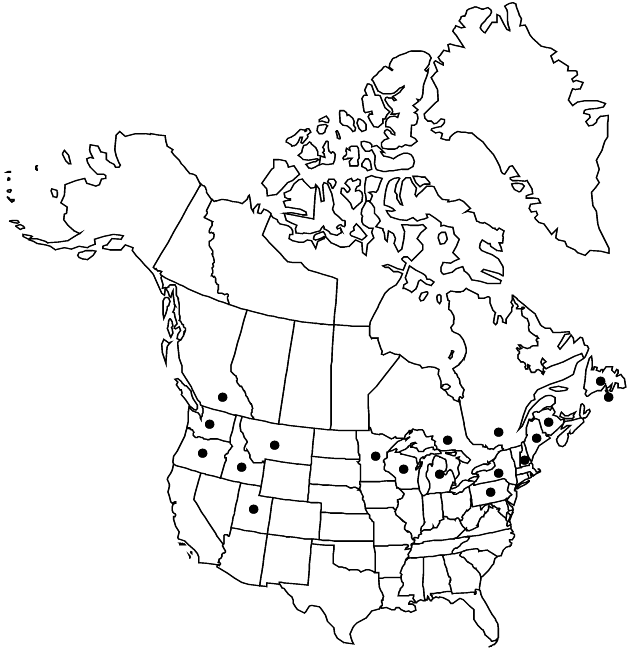Difference between revisions of "Centaurea montana"
Sp. Pl. 2: 911. 1753.
imported>Volume Importer |
(No difference)
|
Latest revision as of 19:02, 29 July 2020
Perennials, 25–80 cm, from rhizomes or stolons. Stems 1–several, erect, simple or sparingly branched, villous with septate hairs and thinly arachnoid-tomentose with long, simple hairs. Leaves thinly villous and ± tomentose, glabrate; proximal leaves winged-petiolate, blades 10–30 cm, margins entire or remotely dentate to pinnately lobed; mid and distal leaves sessile, blades decurrent, ovate to oblong or lanceolate, entire or remotely denticulate. Heads radiant, borne singly or in few-headed corymbiform arrays; (peduncles to 7 cm). Involucres ovoid to ± campanulate, 20–25 mm. Principal phyllaries: bodies greenish, ovate to lanceolate, scarious-margined, appendages appressed, brown to black, unarmed, decurrent on phyllary margins, pectinate-fringed, puberulent; innermost phyllaries sometimes unappendaged. Florets 35–60+; sterile florets 10–20, corollas blue (white, purple, or pink), 2.5–4.5 cm, corolla-tube elongate. Disc-florets 25–40+; corollas purple, ca. 20 mm; anthers dark blue-purple. Cypselae ± brown, 5–6 mm, sericeous; pappi of bristles 0.5–1.5 mm. 2n = 24 (Germany), 40 (Russia), 44 (France).
Phenology: Flowering summer (Jun–Aug).
Habitat: Escaped from cultivation, roadsides, woodlands, sagebrush scrub
Elevation: 0–1400 m
Distribution

Introduced; St. Pierre and Miquelon, B.C., N.B., Nfld. and Labr. (Nfld.), Ont., Que., Alaska, Idaho, Maine, Mich., Minn., Mont., N.H., N.Y., Oreg., Pa., Utah, Wash., Wis., Europe
Discussion
Centaurea montana is a very handsome plant, native to the mountains of Europe, now widely cultivated as an ornamental.
Selected References
None.
Lower Taxa
"fine" is not a number."fine" is not a number.